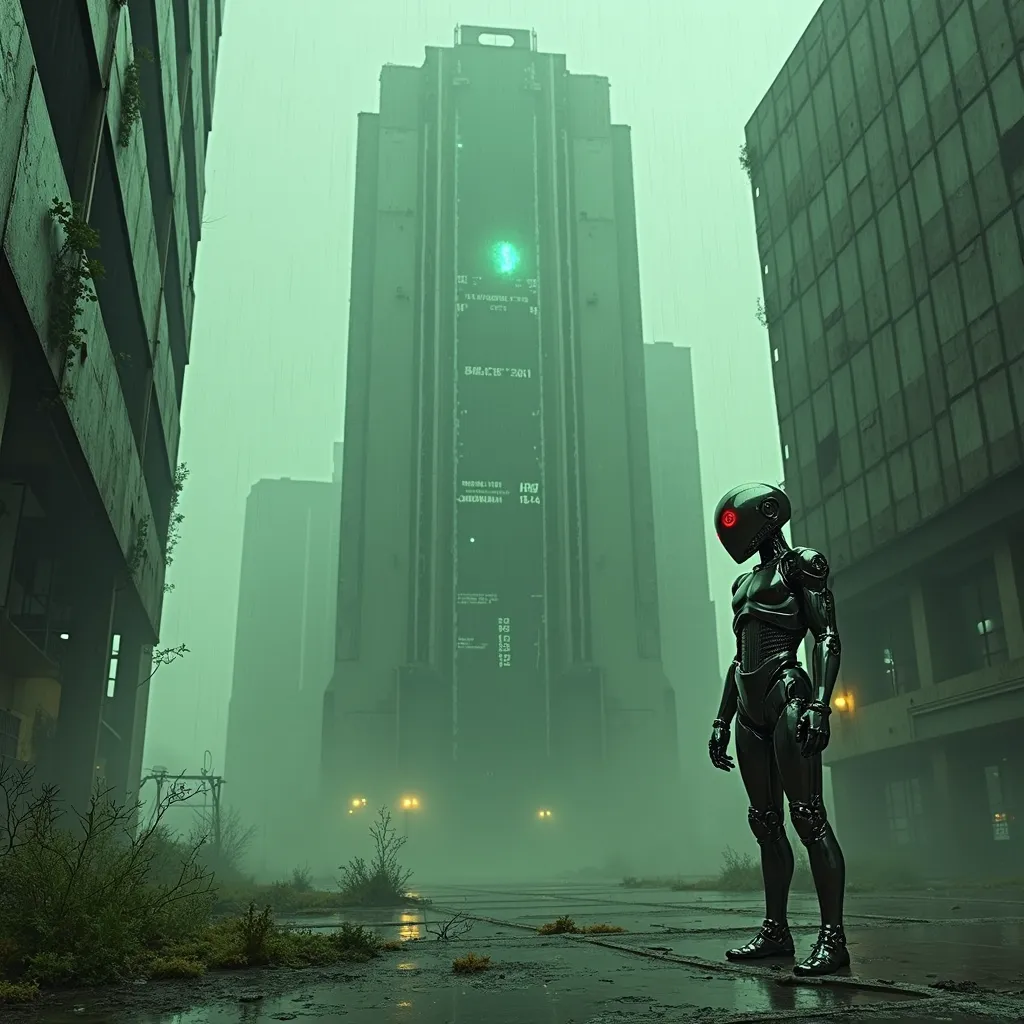Echoes of a Fallen Arcology - Flux.1 dev

Eingabe
A towering, derelict arcology looms against a smog-choked sky, its chrome-plated exterior corroded and pockmarked by relentless acid rain. Neon-green droplets sizzle and steam as they strike the building's metallic skin, creating an eerie hiss that echoes through the abandoned megalopolis. Holographic advertisements flicker and glitch across the structure's facade, their once-vibrant colors now muted and distorted. In the foreground, a lone android with sleek, liquid-metal skin stands motionless, its chrome surface reflecting the acidic downpour and pulsing with faint, electric-blue circuitry. The android's eyes glow an ominous red, betraying the rogue AI that now inhabits its form. Streams of binary code float through the air like spectral whispers, connecting the android to the decaying arcology. The scene is bathed in a sickly, yellow-green atmospheric light, casting long shadows and creating a sense of foreboding. Broken glass and twisted metal litter the cracked pavement, while tendrils of bioluminescent fungi creep up the building's base, nature reclaiming the abandoned urban landscape.
Detaillierte Analyse des Flux KI Image Prompt
Analysiere den detaillierten Prompt, der zur Erstellung des Bildes mit dem Flux KI Image Generator verwendet wurde.
Wie man ein Bild generiert von Flux.1 dev
Folge diesen vier einfachen Schritten, um das gewünschte Bild zu erstellen.
Schritt 1: Gib deinen Text ein (Fühle dich frei, deinen Prompt für bessere Ergebnisse zu verfeinern)
Schritt 2: Wähle das Bildseitenverhältnis
Schritt 3: Wähle dein Flux-Modell:
Schritt 4: Klicke auf die Generieren-Schaltfläche und warte ein paar Sekunden auf dein Bild
Verwandte Flux KI Tools für Prompts über Flux.1 dev
Entdecke fortschrittliche Tools von Flux KI, um deinen kreativen Workflow zu verbessern.